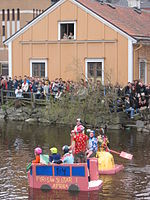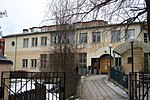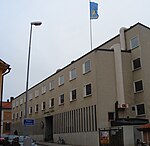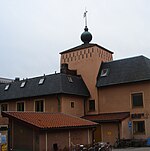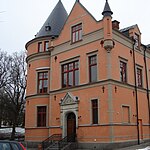Fyrishov

Fyrishov is the largest arena in Uppsala and is Sweden's fourth most visited, specializing in swimming, sports events, meetings and recreation. The facilities includes areas for indoor sports, summer sport and a waterpark with waterslides, 50-metre pool, training pool, relaxation area and an outdoor swimming pool. Fyrishov AB also operates the Gottsundabadet swimming pool with a 25-metre pool, a 10-metre children's pool and gym. Fyrishov is the home arena for Uppsala Basket in the Swedish basketball league (Swedish Basketligan). It also houses the athletic club, the fencing club Upsala Fäktning, Sweden's oldest judo club Uppsala Judklubb, the volleyball team Uppsala volleyball, the weightlifting club Upsala tyngdlyftningsklubb and Upsala Simsällskap, one of the world's oldest swimming clubs. The sport that draws the most audience is football. Uppsala's two teams in the Swedish Super League, Storvreta IBK and IK Sirius IBK, play at Fyrishov.Fyrishov is owned by Uppsala Municipality. It is planned to be renovated and rebuilt to a cost of 500 million SEK, developed by White arkitekter.
Excerpt from the Wikipedia article Fyrishov (License: CC BY-SA 3.0, Authors, Images).Fyrishov
Fyrishov, Uppsala Tuna backar
Geographical coordinates (GPS) Address Nearby Places Show on map
Geographical coordinates (GPS)
| Latitude | Longitude |
|---|---|
| N 59.870833333333 ° | E 17.623611111111 ° |
Address
Fyrishov
Fyrishov
752 17 Uppsala, Tuna backar
Sweden
Open on Google Maps

